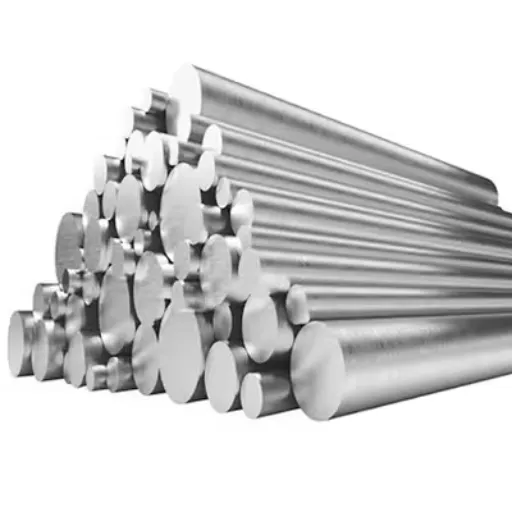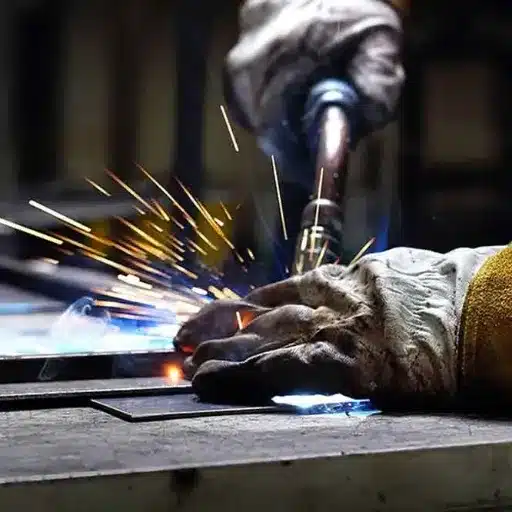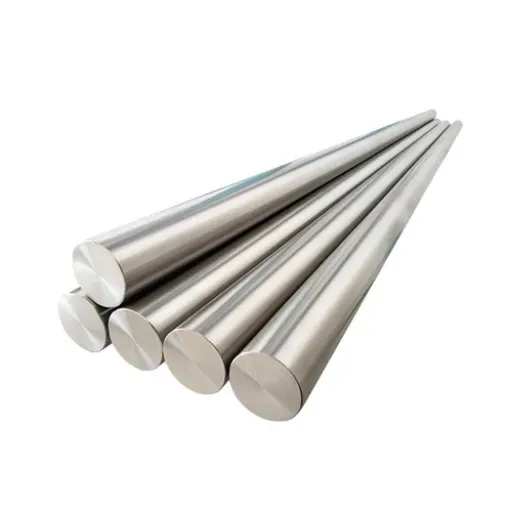When purchasing stainless steel in a kitchen or a restaurant, it is essential to consider the various grades available. A particular type of stainless steel called 18/0 stainless steel is very peculiar owing to its properties and practical uses. But what exactly does 18/0 represent, and what is its relevance to you? In this article, I’ll take you through all the essential things about 18/0 stainless steel, from its composition and advantages to its best application in daily life. Be it a professional chef, a restaurant owner, or someone seeking to upgrade their home kitchen, this in-depth buying guide will equip you with the knowledge needed to make the right decision specific to your requirements. Keep reading to find out the features and advantages of this stainless amalgamate.
What is 18/0 Stainless Steel?
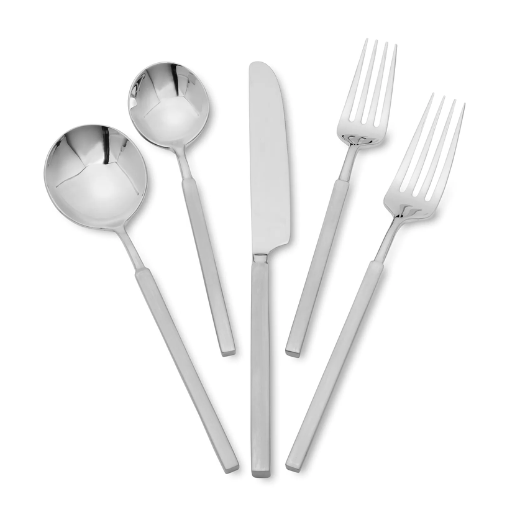
18/0 stainless steel alloy contains 18% chromium and 0% nickel. The lack of nickel makes it cheaper than other types of stainless steel. However, the chromium content is enough to offer corrosion-resistant properties while maintaining a bright and polished look. Given its durability and magnetic properties, which are compatible with induction cooktops, this material is popular in flatware, cookware, and other kitchen tools.
Composition of 18/0 Stainless Steel
18/0 stainless steel is composed mainly of iron (Fe) and approximately 18% chromium (Cr), critical for its corrosion resistance and polishing properties. The absence of nickel, distinguishing it from other common stainless steel types like 18/8 or 18/10 that contain nickel, explains “0” in the name of “18/0” stainless steel. The chromium content helps to combat rust and oxidation, forming a passive oxide layer on the surface, especially in day-to-day activities.
Detailed Percentages:
- Iron (Fe): ~82% – The primary component providing strength and structure.
- Chromium (Cr): ~18% – Enhances corrosion resistance and maintains the shiny appearance.
- Carbon (C): <0.12% – In small amounts to strengthen and increase hardness.
- Manganese (Mn): ~1% – Improves fabricability and wear resistance.
- Silicon (Si): ~1% – Aids oxidation resistance during manufacturing processes.
- Phosphorus (P) & Sulfur (S): Trace amounts (~0.03%) – Aided in reduction for higher strength steel.
Since 18/0 stainless steel does not contain nickel, it is magnetic and ideal for induction cooking. However, the lack of nickel weakens the material’s resistance to corrosion, making it suitable for dry or non-chemically harsh environments. This inexpensiveness, coupled with functionality, makes 18/0 stainless steel the material of choice for economical flatware and kitchen tools.
Difference Between 18/0 and Other Types of Stainless Steel
| Parameter | 18/0 Stainless Steel | 18/8 Stainless Steel | 18/10 Stainless Steel |
|---|---|---|---|
| Chromium Content | 18% | 18% | 18% |
| Nickel Content | 0% | 8% | 10% |
| Corrosion Resistance | Low | Moderate | High |
| Magnetic Properties | Magnetic | Non-magnetic | Non-magnetic |
| Durability | Less durable | Durable | Highly durable |
| Shine/Lustre | Dull | Moderate shine | High shine |
| Heat Resistance | Low | Moderate | High |
| Cost | Least expensive | Moderately priced | Most expensive |
| Common Uses | Basic flatware, utensils | Marine appliances, cookware | Premium flatware, cookware |
Benefits of Using 18/0 Stainless Steel in Cutlery
| Parameter | Benefit |
|---|---|
| Cost | Affordable due to no nickel content |
| Durability | Suitable for everyday use |
| Dishwasher Safe | Easy to clean and maintain |
| Magnetic Properties | Compatible with magnetic retrievers |
| Economic for Volume | Ideal for high-volume establishments |
How Does 18/0 Stainless Steel Compare to Other Types of Stainless Steel?
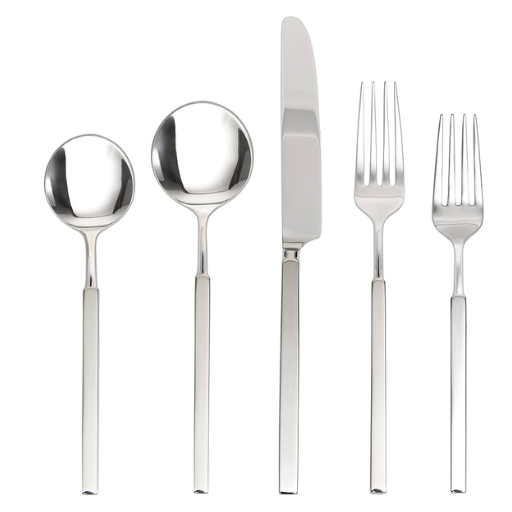
The primary difference between 18/0 stainless steel and other types of steel is their composition and properties. 18/0 stainless steel contains 18% chromium and 0% nickel. This means it is less corrosion-resistant than grades with nickel, like 18/8 or 18/10 stainless steel.” Despite claiming lesser alloys, its lack of nickel makes it more affordable and ideal for people with allergies to nickel. Although 18/0 stainless steel may not be as shiny as higher-grade options, it is sturdy and serves its purpose without fail, especially for casual use and people on a tight budget.
Comparing Stainless Steel Grades: 18/0, 18/8, and 18/10
| Parameter | 18/0 Stainless Steel | 18/8 Stainless Steel | 18/10 Stainless Steel |
|---|---|---|---|
| Chromium Content | 18% | 18% | 18% |
| Nickel Content | 0% | 8% | 10% |
| Corrosion Resistance | Low | Moderate | High |
| Durability | Less durable | Durable | Highly durable |
| Shine/Lustre | Dull | Moderate shine | High shine |
| Magnetic Properties | Magnetic | Non-magnetic | Non-magnetic |
| Heat Resistance | Low | Moderate | High |
| Cost | Least expensive | Moderately priced | Most expensive |
| Common Uses | Basic flatware, utensils | Cookware, marine appliances | Premium flatware, cookware |
The Role of Chromium and Nickel in Stainless Steel
| Parameter | Role of Chromium | Role of Nickel |
|---|---|---|
| Corrosion Resistance | Forms a protective oxide layer | Enhances resistance in acidic environments |
| Strength | Improves heat resistance | Adds toughness and durability |
| Ductility | Limited impact | Increases flexibility and formability |
| Magnetic Properties | Retains magnetic properties | Makes steel non-magnetic |
| Cost Impact | More affordable | Increases material cost |
| Common Applications | Automotive, kitchen utensils | Medical, marine, and chemical industries |
Understanding Corrosion Resistance in 18/0 Stainless Steel
Due to its chromium content, 18/0 stainless steel offers moderate resistance towards corrosion, but lacks the durable defense against rust that nickel in higher-grade alloys provides.
Is 18/0 Stainless Flatware the Best Quality Choice?
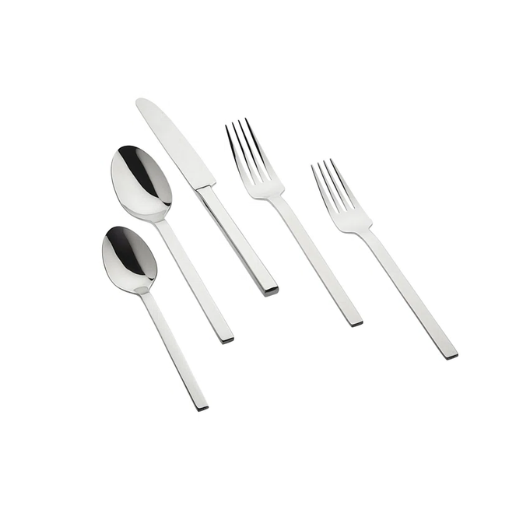
When it comes to 18/0 stainless flatware, it may not be the ideal fit for targeting longevity, but for people looking for economical choices, this certainly is a reasonable option. Unlike other alternatives, it has no deficiency in granting ease of use. That being said, it is certainly softer and less resistant to rust than higher-grade options like 18/10 stainless steel. Compared to others, 18/0 stainless steel possesses some corrosion resistance due to its chromium content. Polished appearance and wear resistance can be targeted through the acquisition of higher-grade materials.
Pros and Cons of 18/0 Stainless Flatware
| Parameter | Pros | Cons |
|---|---|---|
| Cost | Affordable | Lacks premium appearance |
| Durability | Suitable for everyday use | Less durable than nickel-containing types |
| Corrosion Resistance | Dishwasher safe | Prone to rust and stains |
| Shine/Lustre | Soft sheen | Dull compared to 18/10 or 18/8 |
| Magnetic Properties | Magnetic, works with retrievers | Not relevant for all applications |
| Common Uses | Ideal for casual dining, high-volume use | Not suitable for fine dining |
Factors Influencing Flatware Quality
| Parameter | Description |
|---|---|
| Material | Stainless steel grade (e.g., 18/10, 18/0) |
| Weight | Heavier weight indicates higher durability |
| Finish | Polished or matte, free of scratches |
| Design | Ergonomic and visually appealing |
| Thickness | Minimum 2.5 mm for forks and spoons |
| Knife Blade | Clean serrated edge, durable construction |
| Corrosion Resistance | Higher nickel content improves resistance |
| Ease of Care | Dishwasher-safe and easy to maintain |
Choosing the Right Stainless Steel Flatware for Your Needs
The cost, maintenance, and appearance of stainless steel cutlery are very important to me, and so is their durability. If I want to spend less money, I could get 18/0 stainless steel cutlery, but they require some upkeep. Nonetheless, 18/10 stainless steel works better for me because it is more long-lasting and does not corrode as easily. Ultimately, I must balance my priorities and how I plan to use the cutlery daily.
Why is Nickel Content Absent in 18/0 Stainless Steel?
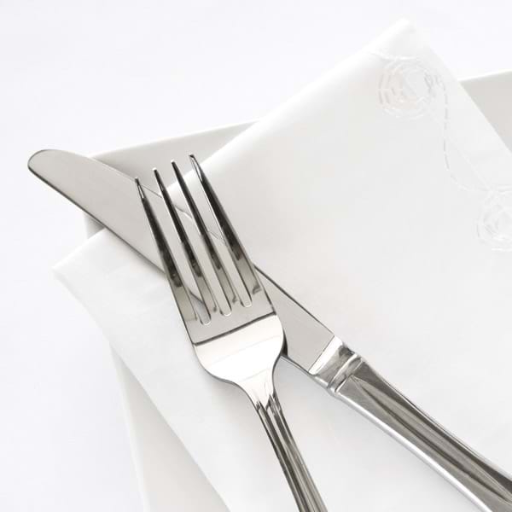
Stainless steel 18/0 does not contain nickel, making it more affordable since it is designed that way. It uses chromium, usually approximately 18%, which provides rust resistance. For people looking for inexpensive options, this grade is good, but it may not fight rust or stains as well as 18/10 stainless steel, which has nickel.
Impact of Nickel Content on Stainless Steel Properties
Nickel content profoundly affects stainless steel, increasing its efficiency and resistance. Below, we’ll examine five impacts of nickel content on stainless steel.
- Resistance to Corrosion
The degree of resistance to stains and rust increases with increased nickel content. Stain steel types like 316 are better than other types as they withstand harsh surroundings like marine or industrial areas.
- Shift in Strength and Toughness in Low Temperatures
Even below freezing degrees, stainless steel remains tough. This is one reason it’s perfect for use in cryogenic applications such as storage tanks and pipelines for liquefied gases.
- Formability
Nickel enhances stainless steel’s flexibility, allowing it to be molded easily into complex shapes without cracking or breaking.
- Aesthetic Finish
Due to its high polish and bright finish, nickel stainless steel can be used for higher-profile applications, such as kitchen appliances and construction.
- Weldability
During the welding process, weld joints are subject to cracking. Adding nickel significantly decreases these cracks, strengthening the welded structure.
These properties allow the use of nickel to aid in the high-quality containment of steel for demanding and specific applications.
Health Implications of Nickel in Stainless Steel
| Parameter | Health Implication |
|---|---|
| Allergic Reactions | Can cause dermatitis in sensitive individuals |
| Nickel Leaching | Leaches into food during cooking |
| Dietary Exposure | Adds to daily nickel intake |
| Sensitive Groups | Affects those with nickel allergies |
| Cooking Duration | Longer cooking increases nickel leaching |
| Stainless Steel Grade | Higher nickel grades leach more |
Can 18/0 Stainless Steel Rust?
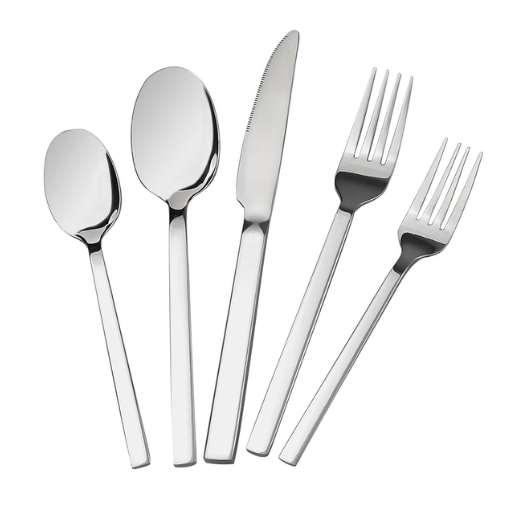
Of course, 18/0 stainless steel can rust under certain conditions. Even if it is ‘stainless’, the chromium content means it has some rust resistance. The lack of nickel, however, makes it less corrosion-resistant than other grades of stainless steel. High humidity, saltwater, and acidic environments significantly increase the chances of 18/0 stainless steel rusting. As with any type of steel, regular cleaning and proper maintenance can reduce the chances of rust forming.
Understanding Rust and Corrosion in Stainless Steel
| Parameter | Details |
|---|---|
| Protective Layer | Chromium oxide prevents rust formation |
| Common Corrosion Types | Pitting, crevice, galvanic, and general |
| Chloride Exposure | Causes pitting, especially in salty environments |
| Galvanic Corrosion | Occurs when dissimilar metals contact |
| Crevice Corrosion | Happens in gaps with low oxygen levels |
| Weld Decay | Caused by heating stainless to specific ranges |
| Maintenance | Regular cleaning preserves the protective layer |
| Material Selection | Higher chromium/molybdenum grades resist better |
Maintenance Tips to Keep 18/0 Stainless Steel Resistant to Corrosion
- Conduct gentle and routine cleaning
To clean 18/0 stainless steel, dampen a soft cloth with a mild detergent solution. Remember to avoid abrasive cleaning materials that could scratch and thicken. Regular cleansing checks for any build-up of dirt, grease, and other materials that could catalyze rust.
- Dry thoroughly and properly.
After cleansing, dry off the stainless-steel appliance with a gentle towel. This removes any moisture buildup and therefore prevents the formation of spots. Contact with water, especially in damp settings, increases corrosion risk over time.
- A plate of food should not directly contact strong acids and salts
Keep the stainless steel’s surface clear of salt or acid-based substances such as vinegar and citrus fruits. Should contact be made, immediately rinse and dry off the surface to remove the possibility of pitting or ruining.
- Defend with coatings
Apply a thin layer of food-grade oil or polish to the steel’s surface to shield it from external factors. This will inhibit oxidation and environmental effects such as humidity.
- Keep In A Place With Low Humidity
When storing stainless steel items, ensure the area is dry and has good circulation. If the humidity is too high, the risk of corrosion also increases significantly. As an extra layer of protection, consider using desiccants or moisture-absorbing materials in storage containers.
References
- Xometry: This resource explains the composition, properties, and applications of 18/0 stainless steel, comparing it with other grades like 18/8 and 18/10. It highlights its affordability and lack of nickel, which impacts corrosion resistance and durability. Source
- WebstaurantStore: This guide discusses the characteristics of 18/0 stainless steel, emphasizing its chromium content, magnetic properties, and suitability for cost-effective applications like dining halls and fast-casual restaurants. Source
- Silver Superstore: This site provides a detailed breakdown of the chromium and nickel content in 18/0 stainless steel, explaining its rust resistance and lack of nickel, which affects its shine and durability. Source
Frequently Asked Questions (FAQ)
Q: What is 18/0 stainless steel?
A: 18/0 stainless steel is an alloy containing 18% chromium and 0% nickel. It is commonly used for tableware and kitchen utensils due to its affordability and resistance to corrosion.
Q: How does the chromium content affect stainless steel?
A: The amount of chromium in stainless steel contributes to its corrosion resistance. Chromium creates a protective layer on the surface, making it suitable for use in cookware and utensils.
Q: Why is there no nickel in 18/0 stainless steel?
A: 18/0 stainless steel does not include nickel to keep costs lower and to prevent allergic reactions some people have to nickel. This makes it ideal for certain kitchen utensils and flatware, such as forks and spoons.
Q: Is 18/0 stainless steel dishwasher safe?
A: Yes, 18/0 stainless steel is generally dishwasher safe. However, it may not be as resistant to rust and staining as other grades, like 304 stainless steel, especially in harsh dishwasher conditions.
Q: What are the advantages of using 18/0 stainless steel for tableware?
A: The main advantages include its affordability, resistance to corrosion, and suitability for people with nickel allergies. It is a practical choice for everyday tableware and kitchen utensils.
Q: How does 18/0 stainless steel compare to 304 stainless steel?
A: 304 stainless steel contains 18% chromium and 8% nickel, making it more corrosion-resistant and higher in quality than 18/0 stainless steel. It is often used in high-end cookware and kitchen utensils.
Q: Can 18/0 stainless steel be used for fine dining settings?
A: While 18/0 stainless steel is functional and cost-effective, it may lack the luster and durability of higher-grade options, making it less ideal for fine dining settings.
Q: Is 18/0 stainless steel suitable for use with acidic foods?
A: 18/0 stainless steel can be used with acidic foods, but it may not perform as well as other stainless steel grades that contain nickel, which provides additional corrosion resistance.
Q: What is the hardness of 18/0 stainless steel?
A: The hardness of 18/0 stainless steel is generally lower than other stainless steel alloys containing nickel. This can affect its durability and resistance to wear over time.
Q: Why is 18/0 stainless steel a popular choice for kitchen utensils?
A: 18/0 stainless steel is popular for kitchen utensils because it is cost-effective, resistant to rust, and safe for those with nickel allergies. It is a practical choice for everyday use in the kitchen.

